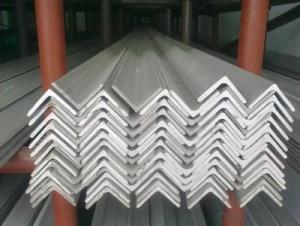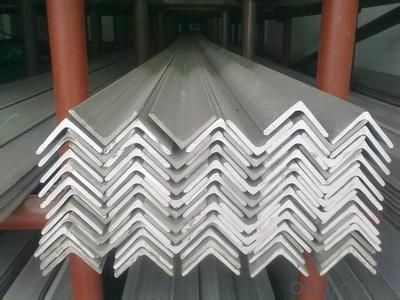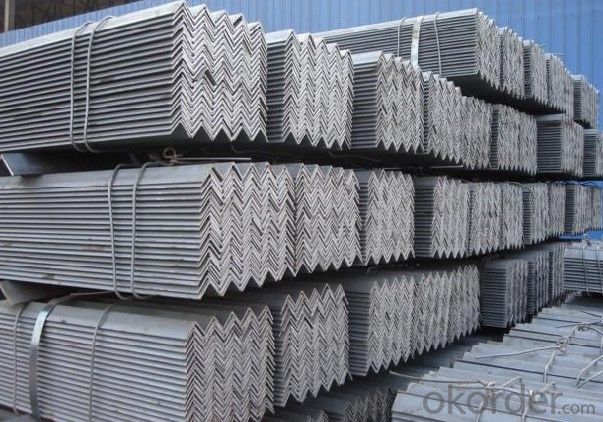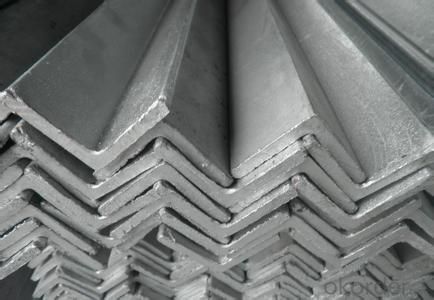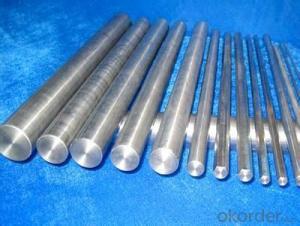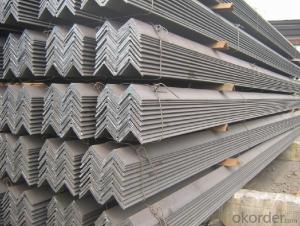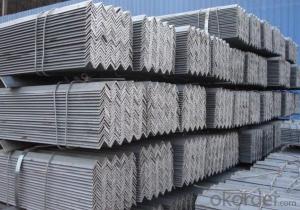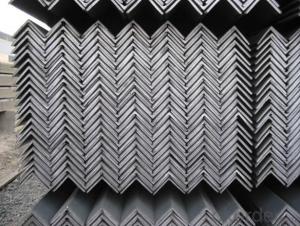Angle Steel Hot Rolled 20-250MM GB Q235 or ASTM
- Loading Port:
- Tianjin
- Payment Terms:
- TT OR LC
- Min Order Qty:
- 25 m.t.
- Supply Capability:
- 20000000 m.t./month
OKorder Service Pledge
OKorder Financial Service
You Might Also Like
Product Description:
OKorder is offering high quality Angle Steel Hot Rolled 20-250MM GB Q235 or ASTM at great prices with worldwide shipping. Our supplier is a world-class manufacturer of steel, with our products utilized the world over. OKorder annually supplies products to European, North American and Asian markets. We provide quotations within 24 hours of receiving an inquiry and guarantee competitive prices.
Product Applications:
According to the needs of different structures, Angle can compose to different force support component, and also can be the connections between components. It is widely used in various building structures and engineering structures such as roof beams, bridges, transmission towers, hoisting machinery and transport machinery, ships, industrial furnaces, reaction tower, container frame and warehouse etc
Product Advantages:
OKorder's Angle Steel Hot Rolled 20-250MM GB Q235 or ASTM are durable, strong, and resist corrosion.
Main Product Features:
· Premium quality
· Prompt delivery & seaworthy packing (30 days after receiving deposit)
· Corrosion resistance
· Can be recycled and reused
· Mill test certification
· Professional Service
· Competitive pricing
Product Specifications:
Manufacture: Hot rolled
Grade: Q195 – 235
Certificates: ISO, SGS, BV, CIQ
Length: 6m – 12m, as per customer request
Packaging: Export packing, nude packing, bundled
Sizes: 25mm-250mm、 | ||||||||||
a*t | ||||||||||
25*2.5-4.0 | 70*6.0-9.0 | 130*9.0-15 | ||||||||
30*2.5-6.6 | 75*6.0-9.0 | 140*10-14 | ||||||||
36*3.0-5.0 | 80*5.0-10 | 150*10-20 | ||||||||
38*2.3-6.0 | 90*7.0-10 | 160*10-16 | ||||||||
40*3.0-5.0 | 100*6.0-12 | 175*12-15 | ||||||||
45*4.0-6.0 | 110*8.0-10 | 180*12-18 | ||||||||
50*4.0-6.0 | 120*6.0-15 | 200*14-25 | ||||||||
60*4.0-8.0 | 125*8.0-14 | 250*25 | ||||||||
FAQ:
Q1: How do we guarantee the quality of our products?
A1: We have established an advanced quality management system which conducts strict quality tests at every step, from raw materials to the final product. At the same time, we provide extensive follow-up service assurances as required.
Q2: How soon can we receive the product after purchase?
A2: Within three days of placing an order, we will begin production. The specific shipping date is dependent upon international and government factors, but is typically 7 to 10 workdays.
Q3: What makes stainless steel stainless?
A3: Stainless steel must contain at least 10.5 % chromium. It is this element that reacts with the oxygen in the air to form a complex chrome-oxide surface layer that is invisible but strong enough to prevent further oxygen from "staining" (rusting) the surface. Higher levels of chromium and the addition of other alloying elements such as nickel and molybdenum enhance this surface layer and improve the corrosion resistance of the stainless material.

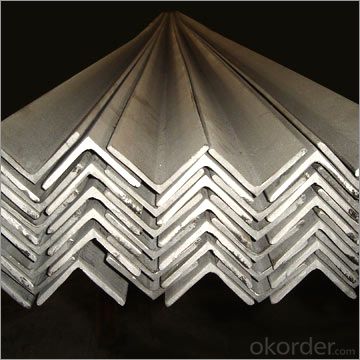
- Q: How do steel angles contribute to the overall stiffness of a structure?
- Steel angles contribute to the overall stiffness of a structure in several ways. First and foremost, they provide additional support and rigidity to the framework of the structure. Due to their L-shape, steel angles can be used to reinforce the corners and edges of various components, such as beams, columns, and trusses. This reinforcement helps to prevent buckling, twisting, or bending that may occur under heavy loads or external forces. Moreover, steel angles can be strategically placed at key locations within a structure to resist and distribute loads more efficiently. By adding steel angles as bracing elements, the overall stiffness of the structure is enhanced, reducing the chances of excessive deflection or deformation. This is particularly important in structures that are subjected to dynamic loads, such as wind or seismic forces, as the angles help to resist and dissipate these forces throughout the structure. Additionally, steel angles can be interconnected to form a network of diagonal bracing, which significantly improves the overall stiffness and stability of the structure. This bracing system allows the angles to transfer loads from one component to another, effectively reducing the risk of failure or collapse. The use of steel angles in this manner can also help to minimize the amount of material and weight required, making the structure more cost-effective and efficient. In summary, steel angles play a crucial role in contributing to the overall stiffness of a structure by providing reinforcement, supporting key components, and distributing loads. Their versatility and strength make them an essential element in the design and construction of various types of structures, ensuring their stability, durability, and safety.
- Q: Can steel angles be used in architectural lighting installations?
- Yes, steel angles can be used in architectural lighting installations. Steel angles provide structural support and can be used to mount lighting fixtures securely. They are often used in applications where durability and strength are important, making them suitable for architectural lighting installations.
- Q: Can steel angles be used in mezzanine or raised platform construction?
- Yes, steel angles can be used in mezzanine or raised platform construction. Steel angles are commonly used as structural supports in construction due to their strength and durability. They can be used as framing elements to create the framework of the mezzanine or raised platform. Steel angles provide stability and support to the structure, ensuring its robustness and ability to withstand heavy loads. Additionally, steel angles can be easily welded or bolted together, making them a versatile choice for construction projects.
- Q: What is the maximum allowable tensile stress for a steel angle?
- The maximum allowable tensile stress for a steel angle depends on various factors such as the specific grade of steel, the manufacturing process, and the intended application. Steel angles are commonly used in construction and structural applications, and their maximum allowable tensile stress is typically determined by industry standards and design codes. For example, in the United States, the American Institute of Steel Construction (AISC) provides design specifications for structural steel angles. According to AISC, the maximum allowable tensile stress for a steel angle is typically based on the yield strength of the steel material. The yield strength refers to the stress at which a material begins to deform permanently. It is usually specified in terms of pounds per square inch (psi) or megapascals (MPa). Steel angles are typically designed to operate within a certain percentage of their yield strength to ensure structural integrity and safety. In general, the maximum allowable tensile stress for a steel angle is often limited to a percentage of its yield strength, typically ranging from 50% to 70%. This means that the maximum tensile stress that can be applied to a steel angle is a fraction of its yield strength. It is crucial to consult the appropriate design standards and codes, such as those provided by AISC or other relevant organizations, to determine the specific maximum allowable tensile stress for a given steel angle in a particular application. These standards consider factors such as load conditions, safety factors, and environmental conditions to ensure the structural integrity and reliability of the steel angle.
- Q: What are the different design considerations for steel angles in architectural applications?
- Some of the different design considerations for steel angles in architectural applications include the load-bearing capacity, structural stability, aesthetic appeal, corrosion resistance, and ease of installation. Additionally, factors like the size and shape of the angles, the type of steel used, and the specific architectural requirements also play a role in the design process.
- Q: How do steel angles perform under extreme temperatures?
- Steel angles typically perform well under extreme temperatures. Steel is known for its high thermal conductivity, which means it can quickly absorb and distribute heat. This property helps steel angles to withstand extreme temperatures without significant deformation or failure. However, it is important to note that the specific performance of steel angles under extreme temperatures can vary depending on factors such as the alloy composition and heat treatment of the steel. In some cases, steel angles may experience reduced strength or become more susceptible to corrosion at extremely high temperatures. It is recommended to consult with a materials engineer or refer to the manufacturer's specifications to determine the specific performance of steel angles under the desired extreme temperature conditions.
- Q: Can steel angles be bent or shaped?
- Yes, steel angles can be bent or shaped. Steel angles are typically made from hot-rolled steel and are commonly used in construction and manufacturing industries. They are versatile and can be easily bent or shaped to fit specific design requirements. The process of bending steel angles involves applying force to the metal, causing it to deform and take on a new shape. This can be done using various methods, such as using specialized machinery like a press brake or by applying heat to soften the steel before bending. The ability to bend or shape steel angles makes them highly adaptable for a wide range of applications and allows for greater flexibility in design and construction projects.
- Q: Can steel angles be used for machinery frames?
- Certainly, machinery frames can utilize steel angles. The construction and manufacturing industries frequently employ steel angles due to their robustness and adaptability. They serve as a means of furnishing structural reinforcement and stability in a multitude of applications, including machinery frames. Steel angles present an economically viable option as they are readily accessible and can be conveniently crafted to meet precise design specifications. Moreover, steel angles exhibit exceptional load-bearing capability and resistance to deformation, rendering them well-suited for supporting hefty machinery and equipment. Their inflexible and long-lasting characteristics guarantee the steadfastness and endurance of machinery frames, establishing them as a dependable choice within industrial environments.
- Q: What are the different types of steel angles used in transmission towers?
- There are primarily three types of steel angles used in transmission towers: equal leg angles, unequal leg angles, and back-to-back angles.
- Q: What is angle flower? Is it the same as angle iron?
- The angle iron is the foundation of the angle steel and is punched out through the holes,
Send your message to us
Angle Steel Hot Rolled 20-250MM GB Q235 or ASTM
- Loading Port:
- Tianjin
- Payment Terms:
- TT OR LC
- Min Order Qty:
- 25 m.t.
- Supply Capability:
- 20000000 m.t./month
OKorder Service Pledge
OKorder Financial Service
Similar products
Hot products
Hot Searches
Related keywords
